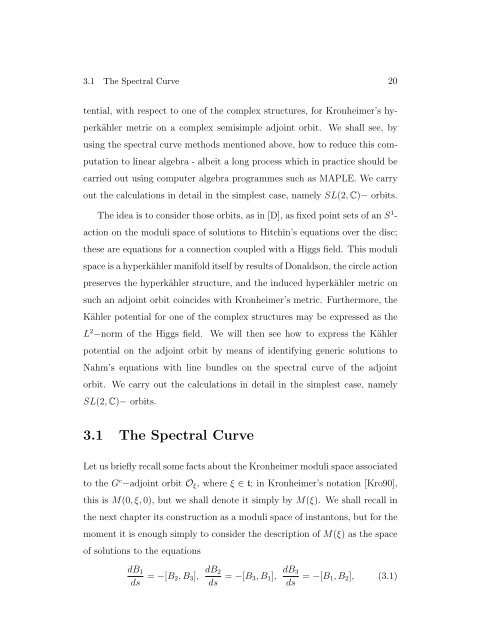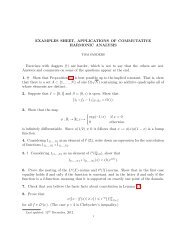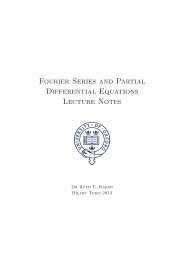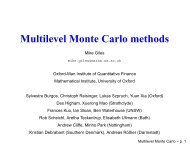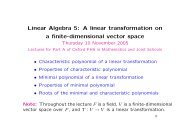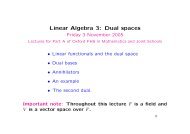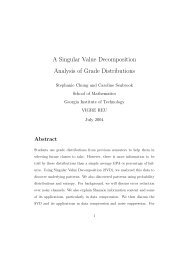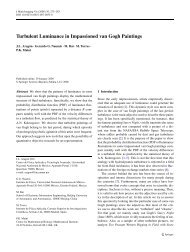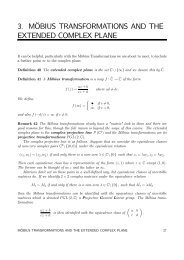Construction of Hyperkähler Metrics for Complex Adjoint Orbits
Construction of Hyperkähler Metrics for Complex Adjoint Orbits
Construction of Hyperkähler Metrics for Complex Adjoint Orbits
You also want an ePaper? Increase the reach of your titles
YUMPU automatically turns print PDFs into web optimized ePapers that Google loves.
3.1 The Spectral Curve 20<br />
tential, with respect to one <strong>of</strong> the complex structures, <strong>for</strong> Kronheimer’s hy-<br />
perkähler metric on a complex semisimple adjoint orbit. We shall see, by<br />
using the spectral curve methods mentioned above, how to reduce this com-<br />
putation to linear algebra - albeit a long process which in practice should be<br />
carried out using computer algebra programmes such as MAPLE. We carry<br />
out the calculations in detail in the simplest case, namely SL(2, C)− orbits.<br />
The idea is to consider those orbits, as in [D], as fixed point sets <strong>of</strong> an S 1 -<br />
action on the moduli space <strong>of</strong> solutions to Hitchin’s equations over the disc;<br />
these are equations <strong>for</strong> a connection coupled with a Higgs field. This moduli<br />
space is a hyperkähler manifold itself by results <strong>of</strong> Donaldson, the circle action<br />
preserves the hyperkähler structure, and the induced hyperkähler metric on<br />
such an adjoint orbit coincides with Kronheimer’s metric. Furthermore, the<br />
Kähler potential <strong>for</strong> one <strong>of</strong> the complex structures may be expressed as the<br />
L 2 −norm <strong>of</strong> the Higgs field. We will then see how to express the Kähler<br />
potential on the adjoint orbit by means <strong>of</strong> identifying generic solutions to<br />
Nahm’s equations with line bundles on the spectral curve <strong>of</strong> the adjoint<br />
orbit. We carry out the calculations in detail in the simplest case, namely<br />
SL(2, C)− orbits.<br />
3.1 The Spectral Curve<br />
Let us briefly recall some facts about the Kronheimer moduli space associated<br />
to the G c −adjoint orbit Oξ, where ξ ∈ t; in Kronheimer’s notation [Kro90],<br />
this is M(0, ξ, 0), but we shall denote it simply by M(ξ). We shall recall in<br />
the next chapter its construction as a moduli space <strong>of</strong> instantons, but <strong>for</strong> the<br />
moment it is enough simply to consider the description <strong>of</strong> M(ξ) as the space<br />
<strong>of</strong> solutions to the equations<br />
dB1<br />
ds = −[B2, B3], dB2<br />
ds = −[B3, B1], dB3<br />
ds = −[B1, B2], (3.1)


